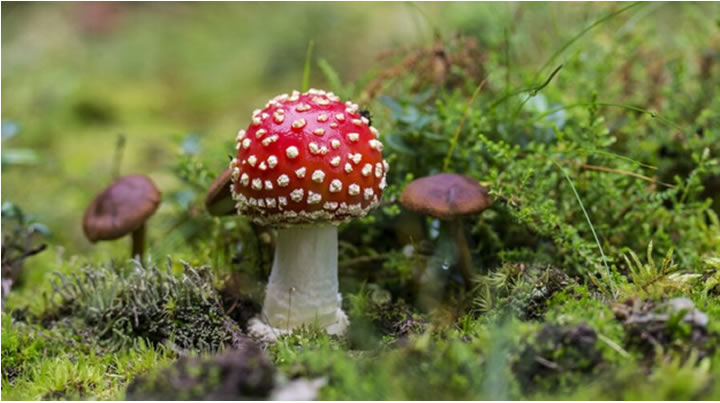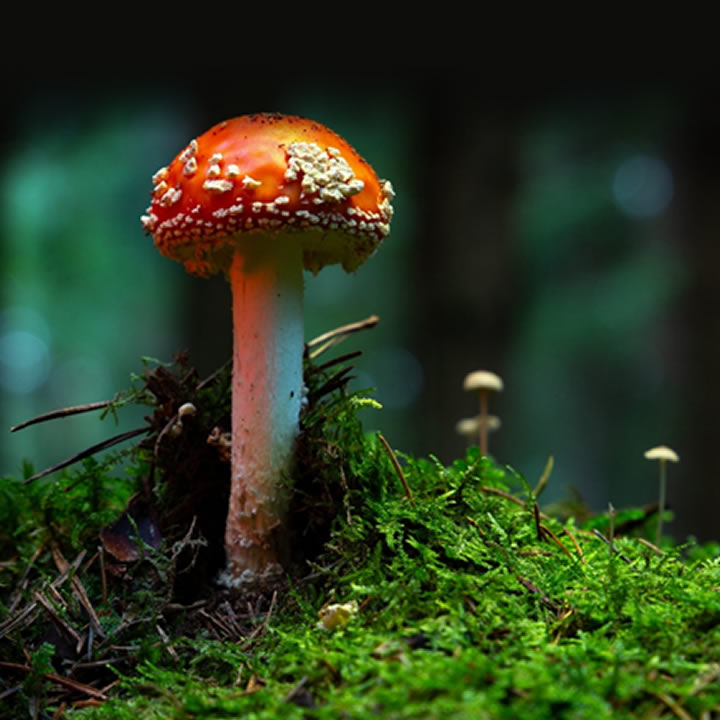For a very long time, the subject of mushrooms has fascinated both foodies and environment lovers!
The Amanita genus stands out among the many variations of mushrooms for its striking appearance and distinctive qualities. Amanita mushrooms have captivated people for various reasons, including their recognizable red caps, white spots, and solid hallucinogenic qualities.
Amanita mushrooms, however, have an extensive variation, each with its unique flavor and culinary applications, and can be found at nearby markets in addition to their mythology and mystique.
In this blog, we’ll delve deeply into amanita mushrooms, learning about their many unique qualities and offering advice on cooking and eating them at home.
So come along with us as we uncover the many delights of Amanita mushrooms!
About Amanita mushrooms
Amanita mushrooms fall under the classification of fungi, with more than 500 species that can be found all over the globe. They are recognized by their unique appearance: gills on the bottom of the cap and a cap with a stalk in the center.
The toxicity of amanita fungi is also well-known, with some varieties being highly toxic and even lethal if consumed.
In Amanita Mushrooms Marketplace, some Amanita mushroom species are prized for their culinary qualities despite their toxicity notoriety.
For instance, a popular edible mushroom in Europe is the Amanita caesarea, also referred to as Caesar’s mushroom, and is valued for its delicate flavor and meaty texture.
It’s crucial to remember that identifying and eating wild mushrooms is an important task and it must only be consumed under professional supervision. Consuming some Amanita species can cause severe illness or even death because they contain fatal toxic substances.
It’s best to buy Amanita mushrooms from a trustworthy seller or seek advice from a forager knowledgeable about mushroom identification if you’re interested in using them in culinary.

Features of Amanita mushrooms
Amanita mushrooms are a unique genus of fungi with several distinguishing characteristics, such as:
Cap: The typical cap of amanita mushrooms is convex or flat with a defined margin around the perimeter. The color of the cap can vary from bright red, golden, or brown, and it frequently has recognizable scales or spots on it.
Gills: The bottom of the cap of amanita mushrooms is covered in gills that extend outward from the stalk. The gills are frequently tightly spaced and can be white, cream, or yellow.
Stem: Amanita mushrooms usually have a central stem that can last a minute to very long. It frequently has a bulbous base and could have a band or veil.
Spore print: Amanita mushrooms release spores from their gills onto a sheet of paper or some other surface, creating a spore print. The type of mushroom can be determined in part by the color of the spore print.
Toxic effects: Amanita mushrooms are notorious for their toxicity, and some species contain poisonous toxins that, if consumed, can result in severe sickness or even death.
Before handling or eating wild mushrooms, it is crucial to use care and seek advice from a professional in identifying and foraging.
Culinary use: Amanita mushrooms come in various species, some of which are highly toxic, while others are valued for their culinary qualities. For instance, the Amanita caesarea is a delectable mushroom with a reputation for having a meaty texture and a delicate taste in Europe.
Having Amanita mushrooms correctly recognized and prepared by an expert is crucial.
Now, let’s dive deep into the varieties of Amanita mushrooms available.

Different varieties of Amanita Mushrooms available at marketplaces
Amanita mushrooms come in several different varieties, each with its unique traits and purposes in cooking.
Listed below are some of the most famous ones:
Amanita muscaria: The Amanita muscaria is perhaps the most recognizable of all Amanita mushrooms, distinguished by its vivid crimson cap with white spots.
The psychoactive qualities of this species are well known, but it’s essential to remember that it’s also highly toxic and must not be consumed raw. Amanita muscaria, on the other hand, can produce a slight hallucinogenic effect when correctly prepared.
Amanita cesarean: The edible fungus Amanita caesarea, also referred to as Caesar’s mushroom is very popular in Europe. It has white gills, a bright orange or yellow cap, and a delicate, nutty taste.
This species, used in soups, stews, and risottos, is commonly grown early in the midsummer to fall seasons.
Amanita pantherina: Amanita pantherina is famous for its poisonous properties with Ibotenic acid, a potent toxin in the deadly mushroom. This species is poisonous, but it is frequently employed in conventional medicine because of its psychoactive qualities.
It has a distinctive appearance with a light brown cap and white gills that turn darker with maturity.
Amanita phalloides: Amanita phalloides ranks as one of the world’s wildest mushrooms and is also called the death cap fungus. Alpha-amanitin, a lethal toxin found in it, can result in liver failure and mortality if consumed.
Under no conditions should this species, which has a white gill surface and a light greenish-brown cap, be consumed.
Amanita gemmata: This less well-known variety can be discovered in some markets. It tastes sweet and nutty and has a bright golden cap with white gills. Although this species is considered edible, it should be eaten cautiously because it strongly matches the dangerous Amanita phalloides.
Amanita mushrooms should only be purchased and eaten with extreme care. Before eating any wild mushrooms, always buy from a reputable seller and take the recommendation of a mushroom identification specialist.
Conclusion
Finally, it should be noted that the genus of fungi known as Amanita contains a variety of peculiar and unusual characteristics.
Some species are valued for their culinary qualities, while others are highly toxic. Amanita mushrooms should only be purchased from a trusted seller and eaten with extreme care.
Before eating any wild mushrooms, you should take the counsel of a mushroom recognition and foraging expert.
You can better understand these intriguing fungi and their significance in traditional culinary and medicinal practices by discovering more about the various Amanita mushrooms readily available at markets.

